While there is still plenty of uncertainty about travel this year, one thing is sure. Triangle folks will be heading to the beach as soon as it’s warm enough to dip a toe into the ocean.
Waiting for visitors will be plenty of sand and surf, but also a rich maritime history, if you know where to look. From Edenton to Bald Head Island, eight historic lighthouses dot the coast and the Outer Banks. Many of the lighthouses can be climbed, and those who make it to the top are rewarded with breathtaking views. But even if the climbs are canceled this year, as they were last year, these beautiful structures deserve to be admired.
Taking a few days to see all the lighthouses is a fine reason for a road trip, but it’s also entertaining to visit them one at a time. Whatever the plan, it’s good to call or check the website before heading out.
Bodie Island Lighthouse, Nags Head
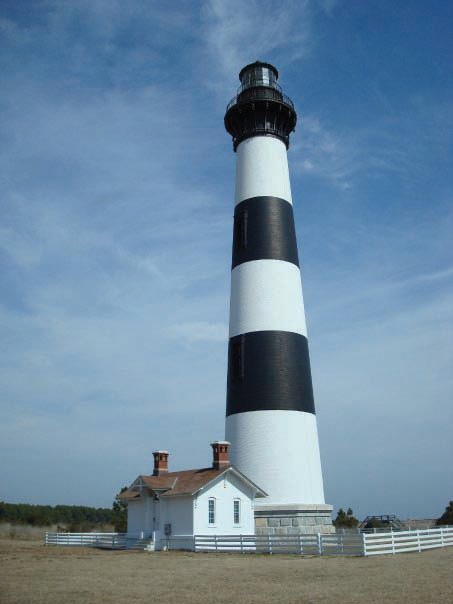
Photographed by Lauren Earley.
The first of three historic lighthouses located inside the Cape Hatteras National Seashore, the Bodie Island Lighthouse began operations in 1872 and is still in use. When open, visitors can climb the 214 steps on self-guided tours. nps.gov/caha/planyourvisit/placestogo.htm
Currituck Beach Lighthouse, Corolla
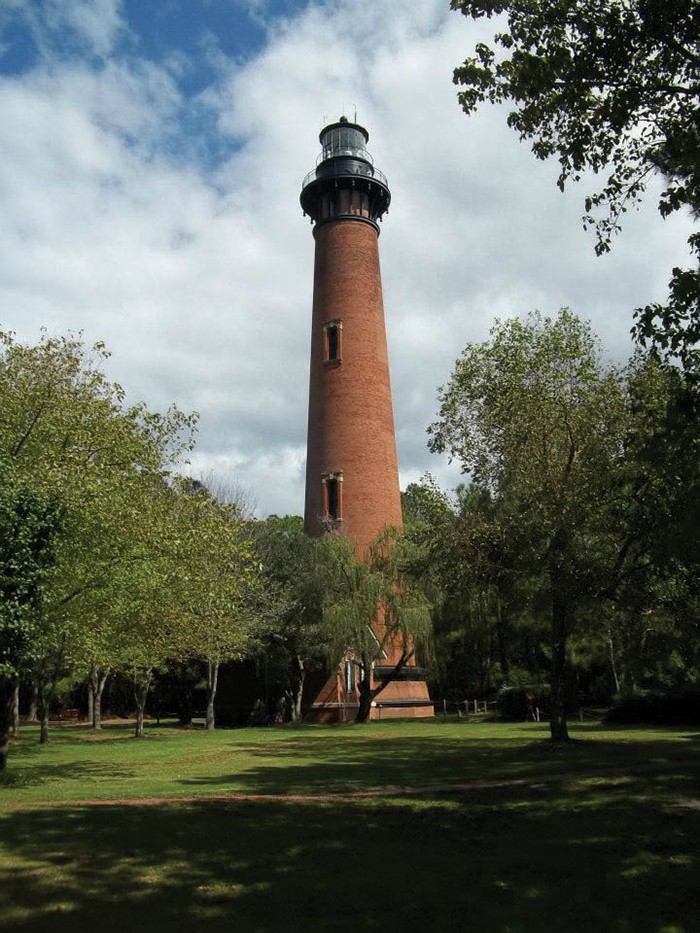
Photographed by Lauren Earley.
Completed in 1872, the Currituck Beach Lighthouse still guides passing mariners. The structure was left unpainted to set it apart from the other coastal lighthouses and to show off the roughly one million bricks used in its construction. obcinc.org
1886 Roanoke River Lighthouse, Edenton
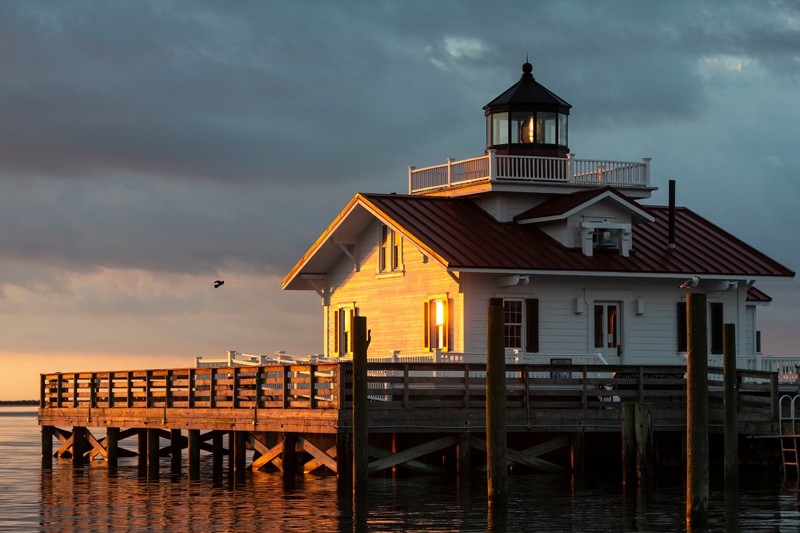
The decommissioned lighthouse once stood in Albemarle Sound, at the mouth of the Roanoke River. It was moved to its current location in 2012, after serving as a private residence for many years. The restored structure is believed to be the last remaining original screw-pile lighthouse in the U.S. historicsites.nc.gov/all-sites/historic-edenton
Cape Lookout Lighthouse, Harkers Island
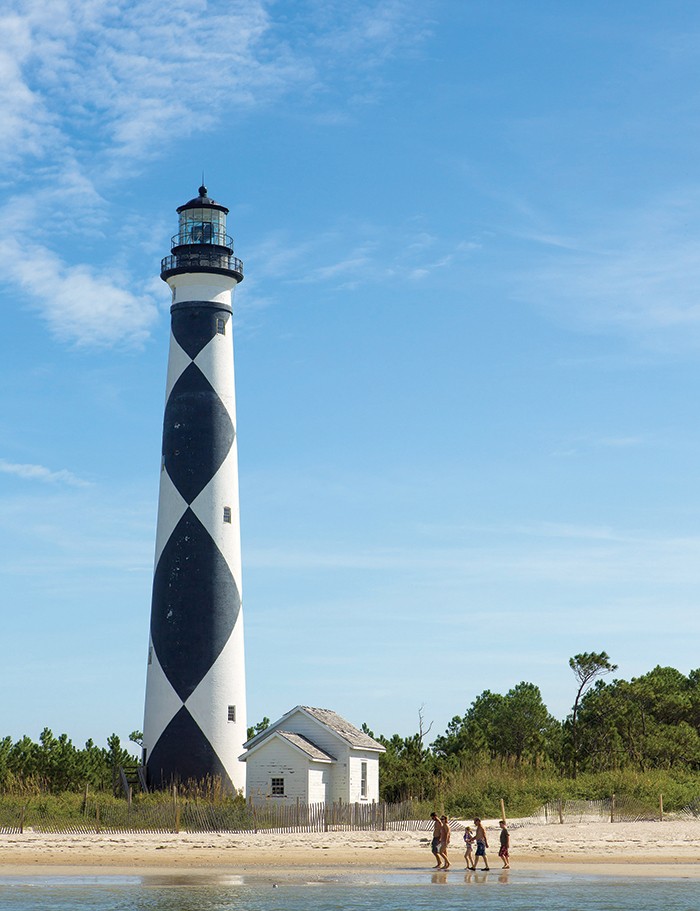
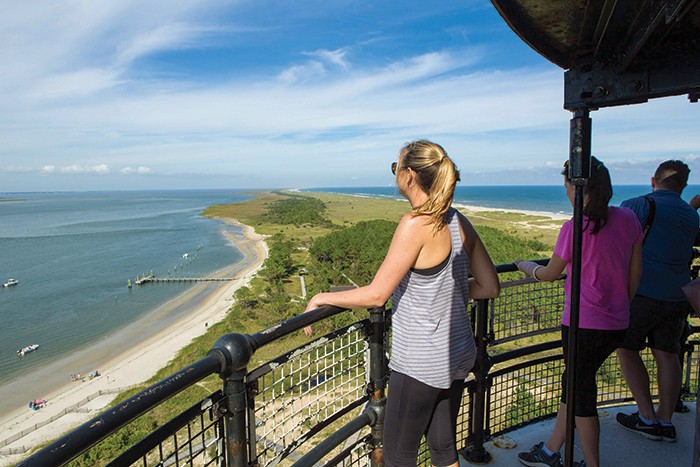
Visitors to the Cape Lookout Lighthouse take in the view after climbing the 207 steps to the top. The climbing season is usually May to September, but COVID-19 restrictions could affect that schedule.
Located inside Cape Lookout National Seashore, this 1859 lighthouse is known for its distinctive diamond pattern. The different markings on each of the coastal lighthouses allow mariners to determine their location during the day, as light patterns enable them to do at night. Miles of undeveloped beach await visitors to Harkers Island, which is only accessible by ferry or private boat. nps.gov/calo/index.htm
Ocracoke Island Light Station, Ocracoke
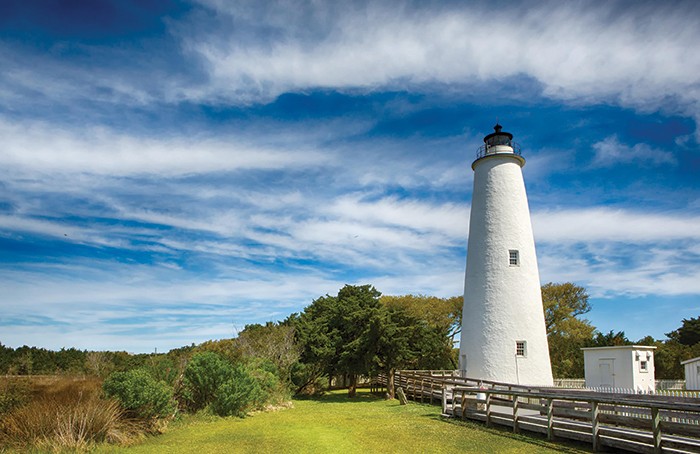
Once a haven for Blackbeard the pirate, Ocracoke Island is home to the state’s oldest operating lighthouse. While the whitewashed structure can’t be climbed, the serene grounds are worth taking the ferry from Hatteras to Ocracoke. nps.gov/caha/planyourvisit/placestogo.htm
Oak Island Lighthouse, Caswell Beach
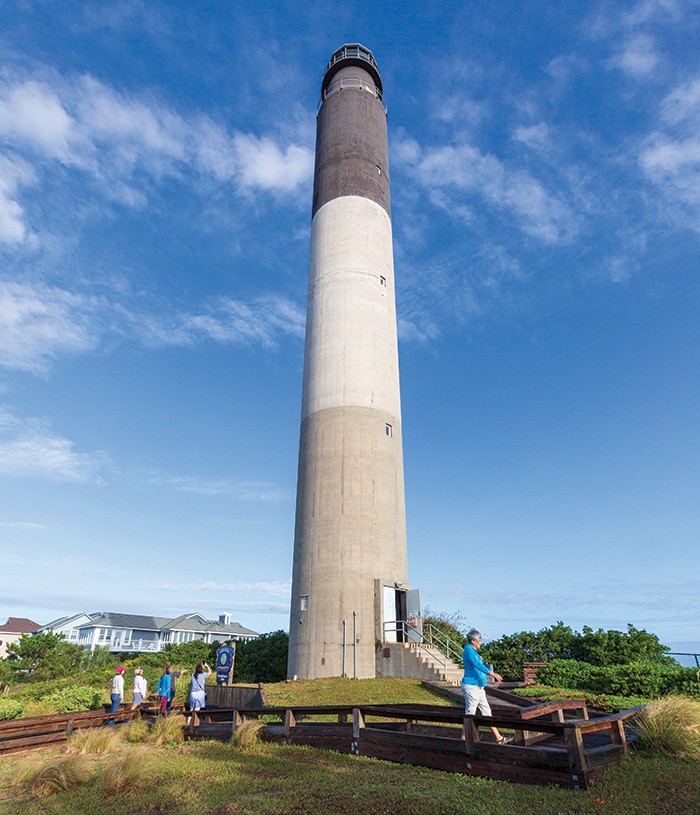

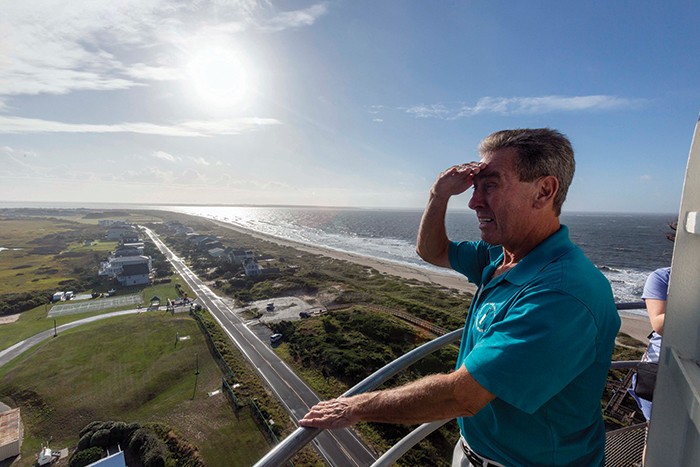
Volunteer guide Bob Ahlers is a member of the Friends of Oak Island Lighthouse.
The newest of the coastal lighthouses, the Oak Island Lighthouse was completed in 1958. Its three-stripe color pattern comes not from paint, but from pigmented concrete. Another unique feature is the climb to the top. Instead of a spiral staircase, a series of ship ladders with a total of 131 steps lead to the lantern gallery level. oakislandlighthouse.org
Bald Head Island Lighthouse
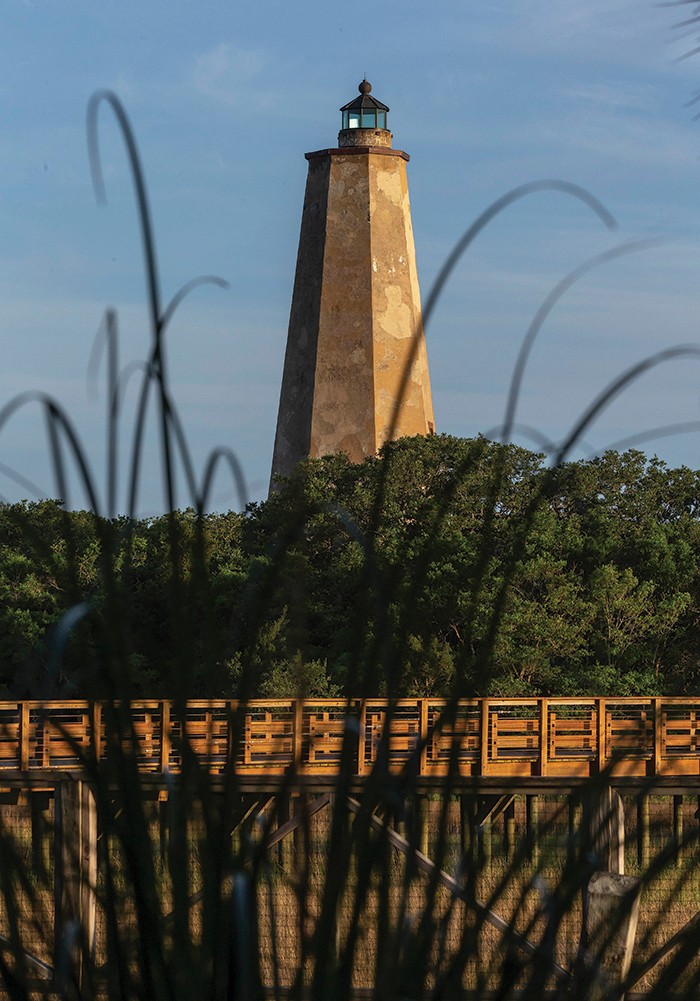
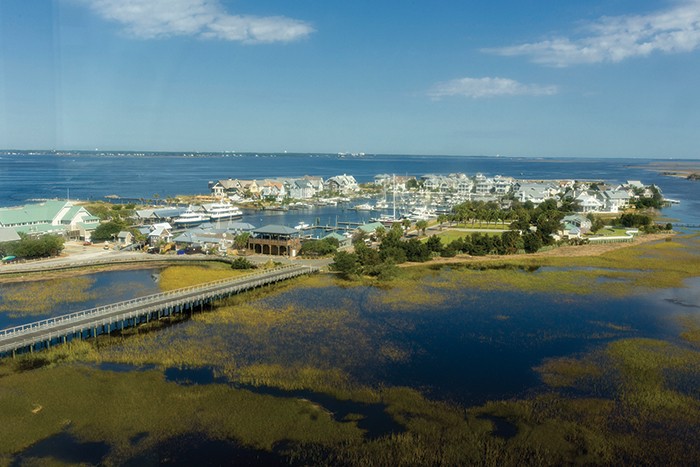
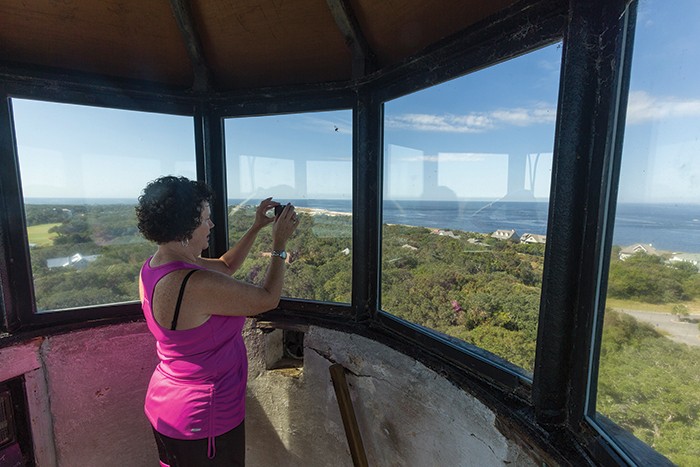

(Old Baldy), Bald Head Island The state’s southernmost (and oldest) lighthouse can be seen from Oak Island, but to get close, visitors must hop on a ferry to get to Bald Head Island. The octagonal brick tower, completed in 1817, is coated with stucco and stands 110 feet high. The restored structure normally welcomes visitors, who can climb its 108 steps or explore the keepers cottage. oldbaldy.org
Cape Hatteras Lighthouse, Buxton
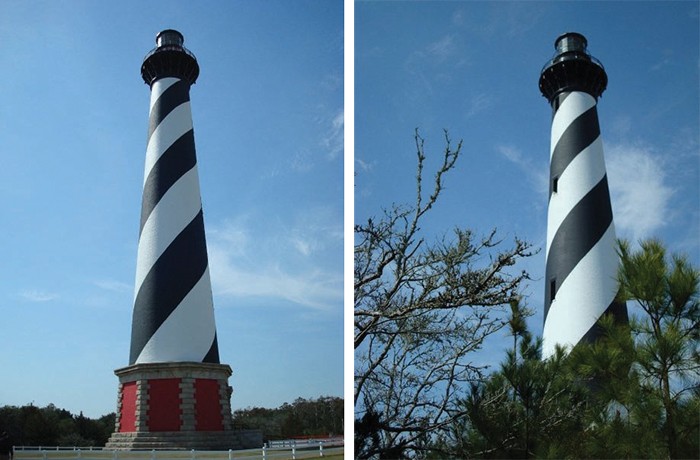
Photographed by Lauren Earley.
Cape Hatteras Lighthouse, completed in 1870, is the nation’s tallest and most recognizable lighthouse. It is located along one the most hazardous sections of the Atlantic Coast, where hundreds of shipwrecks have caused the area to be known as the Graveyard of the Atlantic. The structure measures more than 198 feet from the bottom of the foundation to the top of the pinnacle of the tower, and the self-guided climb to the top is strenuous. nps.gov/caha/planyourvisit/placestogo.htm
- Rhythm and Clues
- Road Trip to Pinehurst Leads to More Than Golf
- A View of North Carolina’s Historic Lighthouses
- The Arts Shine in Downtown Sanford
- Nonprofit Spotlight: Chinese American Friendship Association
- Big Little Gardens
- Small Business Spotlight: Campbell Road Nursery
- Garden Adventurer: A Tale of Two Pretties
- Worth the Drive: Saxapahaw General Store
- Liquid Assets: Octo Pils from Vicious Fishes Brewery
- Liquid Assets: Grateful Dead from Mellow Mushroom
- Liquid Assets: 3 Day Vacay!





